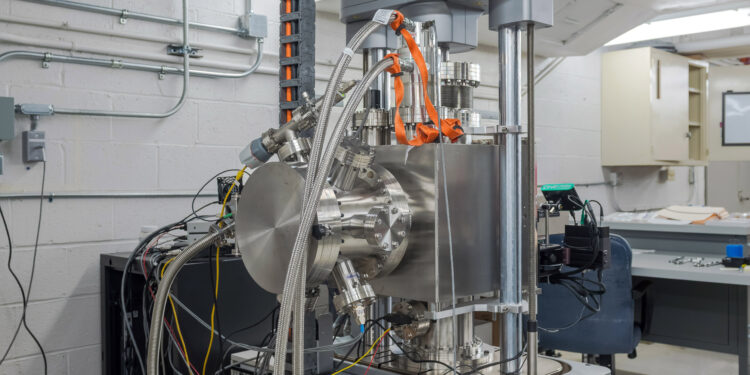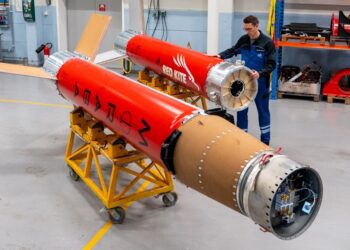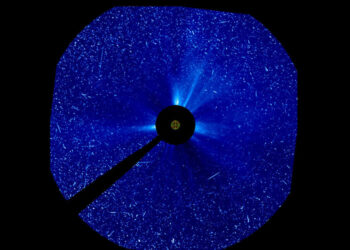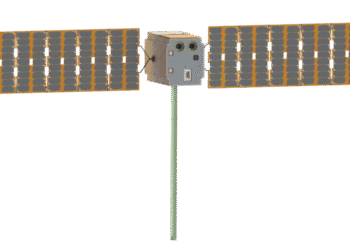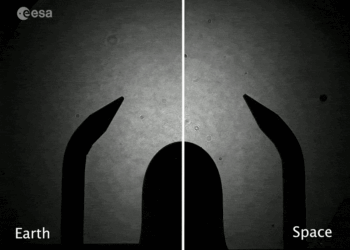NASA’s Glenn Research Center in Cleveland has introduced a new cryogenic vacuum testbed designed to accelerate lunar hardware qualification. The Lunar Environment Structural Test Rig (LESTR) brings materials and flight components down to the intense cold of the lunar night while maintaining high vacuum, enabling true-to-space thermal-mechanical testing ahead of Artemis and future deep-space missions. The facility details were published on Aug. 22, 2025 by NASA Glenn.
What LESTR Does
LESTR departs from traditional liquid-cryogen approaches by using a cryocooler and high-vacuum system to precisely control temperature and environment. This setup allows engineers to evaluate performance, durability, and failure modes of components across a range of cryogenic set points without fluid immersion, reducing complexity and improving repeatability.
Key Specifications
- Temperature range: 40 K to 125 K
- Vacuum level: <5×10⁻⁷ Torr
- Load capacity: ~10 kN
- Test volume: 7.5 × 9.5 × 11.5 inches (cold box)
- Maximum cycle rate: 100 Hz
- Pump-down time: 10⁻⁵ Torr in <1 hour; 10⁻⁶ Torr in ~4 hours
Capabilities and Features
- Dry cryogenic testing with “dial-a-temperature” precision thermal control
- Integrated optical extensometer for strain imaging
- Support for digital image correlation and electrical feedthroughs
- High-duration cyclic testing and static load characterization
Applications for Lunar and Mars Missions
- Cryogenic lifecycle testing: fatigue, fracture, and durability assessments
- Low-frequency vibration testing: electronics qualification for mobility systems
- Static load testing: material behavior in lunar-like conditions
- Suspension and drivetrain evaluations: wheels, springs, shock absorbers, and textiles
- Textiles testing: spacesuit and habitat fabrics under thermal-vacuum
- Dynamic load testing: up to 10 kN linear capacity, 60 mm stroke
Why It Matters for Artemis
The lunar night drives temperatures far below typical spaceflight qualification regimes. By combining high vacuum with controlled cryogenic set points, LESTR offers a path to validate mission-critical components—from rover wheels and mobility systems to avionics and suits—under conditions aligned with the Moon’s surface environment. This reduces risk for surface operations, helps correlate models with test data, and supports certification workflows required for Artemis hardware.
How It Differs from Traditional Methods
Conventional “wet” cryogenic testing often relies on liquid nitrogen or other fluid immersion techniques, which can complicate instrumentation and introduce thermal gradients that are difficult to control. LESTR’s cryocooler-based approach enables stable, repeatable “thermal-vacuum” conditions and fine temperature targeting, improving the fidelity of structural and functional measurements at extreme cold.
Access and Next Steps
NASA Glenn indicates the facility supports industry, government, and academic testing needs, aligning with broader plans to advance lunar surface systems and materials for sustained operations. Its modular design and precision control aim to shorten cycles between design, test, and redesign, helping teams qualify components earlier in development.
For full technical details and facility contacts, see NASA’s announcement: Lunar Environment Structural Test Rig – NASA Glenn.


